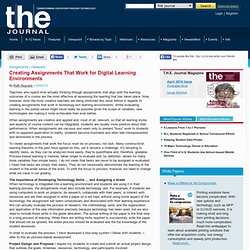

Technology Integration in Education. Www.tpack.org. Teachers - Overview of the Lessons. Adding Emotional Design to eLearning. Emotional design is about the connection that a learner feels while interacting with an e-learning course.

This connection can be generated through instructional strategies and creative treatments. Emotional design in an eLearning can be a very powerful tool in engaging the learner, as it gives us better results in retaining and recalling learning. “Emotional design turns casual users into fanatics, ready to tell others about their positive experience” says Aarron Walter, a lead User Experience Designer at MailChimp, in his book Designing For Emotion. The reason why emotional design is important in an online course, is that all learners are not self-driven, and so will need an external stimulation.
One of the biggest problems is that of completion rates. Enhance the learning by incorporating the emotional component in the course Careless use of the emotions can distract the learner from learning a subject and remembering it. Story-tellingHumorMusicAppropriate images and photographs. Creating Assignments That Work for Digital Learning Environments. Assignments | Viewpoint Creating Assignments That Work for Digital Learning Environments Teachers who spend time actually thinking through assignments that align with the learning outcomes of a course are the most effective at assessing the learning that has taken place.

Now, however, even the most creative teachers are being stretched like never before in regards to creating assignments that work in technology-rich learning environments. While evaluating learning in the purest sense might never really be possible given the scope of variables, new technologies are making it more achievable than ever before. When assignments are creative and applied and, most of all, relevant, so that all learning styles and aspects of course content can be integrated, students are usually more positive about their performance.
To create assignments that work the focus must be on process, not task. In order to evaluate the process, I have developed a four-step system I follow with students. Teaching in the NOW Century.
What Does Inquiry Look Like in Kindergarten? The children were engaged in the inquiry process while observing the properties of water.

As they worked at learning centres the teacher invited interested children to come and discuss what they know about water and its colour. The children made comments which reflected their emerging understanding of the properties of water. These comments then acted as the basis for which to lead the investigation. The children were then prompted to wonder whether the water is the same colour as the white carnation flower. Next the children considered what would happen if colour was added to the water. The children made all kinds of hypotheses including “the flowers will die”, “the water will change”, “the water will change the colours of the flowers”. The children all had theories about how the flowers became coloured. Inquiry-based Learning: Explanation. What is inquiry-based learning?

An old adage states: "Tell me and I forget, show me and I remember, involve me and I understand. " The last part of this statement is the essence of inquiry-based learning, says our workshop author Joe Exline 1. Inquiry implies involvement that leads to understanding. Furthermore, involvement in learning implies possessing skills and attitudes that permit you to seek resolutions to questions and issues while you construct new knowledge. OLATogetherforLearningPROOFFINALFINAL - 677_olatogetherforlearning.pdf. Getting Started with Student Inquiry - CBS_StudentInquiry.pdf.